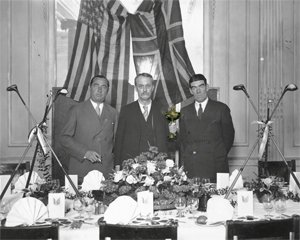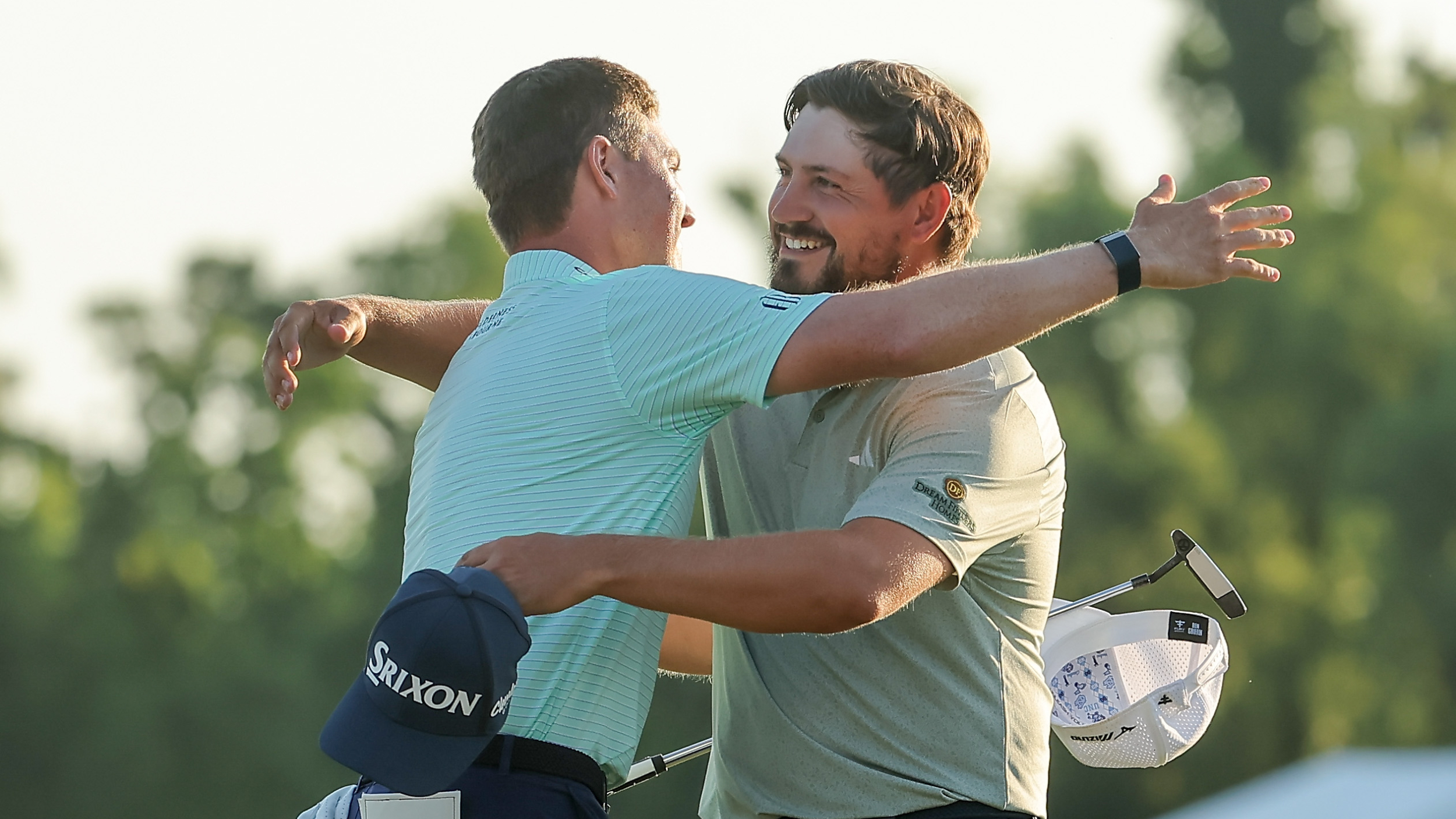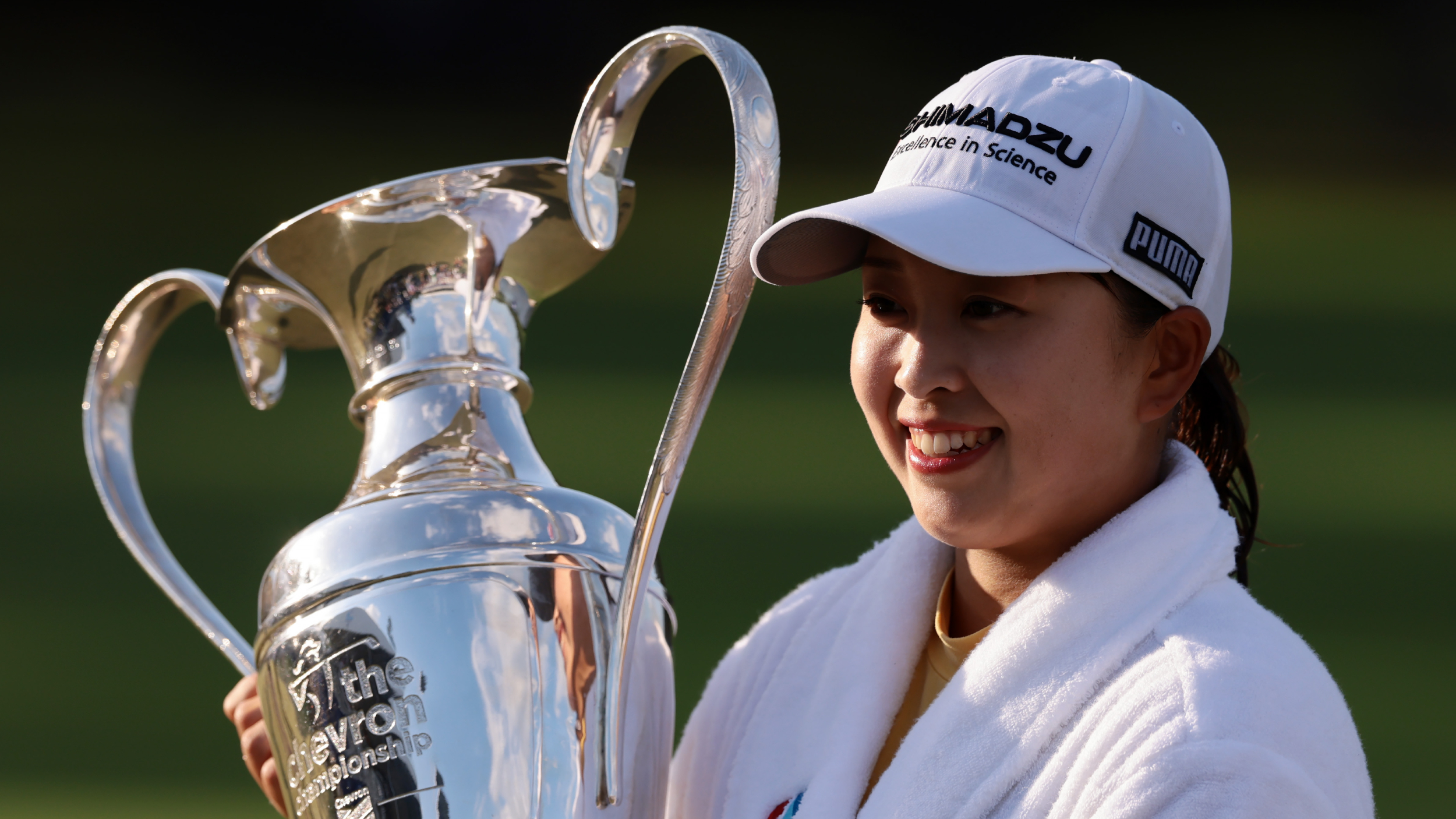The History of the Ryder Cup
Over the past 80 years the Ryder Cup has never failed to excite. Let's take a look through the archives...


Over eighty years encompassing 36 contests and 816 matches, the Ryder Cup is an institution. The great biennial match has come to embody all that is best about our sacred game. The spectacle provided by three days of gritty competition between the best golfers from Europe and America never fails to disappoint. The players, the captains and the fans always display a fanatical desire to win yet there have been displays of the most gallant sportsmanship over the years. Think of golf’s most enduring images – a high percentage will be from the Ryder Cup. The history of the match has been greatly impacted by the involvement of some significant figures over the years. Here we take a tour through time from Ryder and Hagen to Faldo and Monty. In The Beginning The inaugural Ryder Cup of 1927 was not the first team contest between professional golfers from Britain and the USA. In ‘21 a group of American pros travelled to the UK for the 2,000 Guineas Matchplay. While in the country an American squad was put together by James Harnett of Golf Illustrated . The players took on their British peers at the newly opened Gleneagles where the British triumphed. In ‘26 there was a similar contest at Wentworth. Again the British won, this time by a resounding 13½-1½. At that match an interested spectator was a 68-year-old seed merchant called Samuel Ryder. A former mayor of St Albans, Ryder was an influential man and he took it upon himself to make the competition a permanent fixture. He commissioned Mappin & Webb of Mayfair to build a trophy, the cost of which was split: Ryder paid £100, Golf Illustrated paid £100 and the Royal and Ancient Golf Club put in £50. Nineteen inches high and solid gold, the figure on top is modelled on Ryder’s instructor, Abe Mitchell. The Hagen Years “I never wanted to be a millionaire, I just wanted to live like one.” Walter Hagen was golf’s first super-star. With his flamboyant dress and incessant showmanship, he was central in the evolution of professional golf. Hagen captained the US Ryder Cup side in each of the first six events (1927-‘37). As a player, in the first five, his record was superb: seven wins, one half and only one defeat. The loss, however, was a significant one. After thumping a travel weary British team in '27, the US travelled to Moortown in '29 as hot favourites to retain the trophy. On seeing his singles opponent was British captain George Duncan, “The Haig” reacted in a typically haughty fashion. “That’s a point to our side boys,” he said. “I can take that guy on the best day he’s ever had.” Hagen was thrashed 10&8 over 36 holes and the British were spurred on to a 7-5 victory. Through the 1930s the Americans began to gain the upper hand - their victories in ‘31 and ‘35 came with some ease, although the British team sneaked home by a single point in ‘33 at Southport & Ainsdale. When the Cup returned to the North-West coast in ‘37 Golf Monthly described the US team as, “The greatest golfing force ever to come to this country.” With players like Gene Sarazen, Sam Snead and Byron Nelson, the result was never in doubt and the trophy stayed in American hands. In 1937 the Western world was in turmoil. The Great Depression was still affecting life while Hitler’s increasingly aggressive foreign policy meant Europe was on an irreversible path to war. The ‘39 Ryder Cup was scheduled for November at Ponta Vedra Club in Florida but war was declared in September and the match was cancelled. It wouldn’t be played again until ‘47. The Hogan Years Today, when the Ryder Cup commands such a huge level of media attention and general excitement, it’s difficult to imagine the contest being overshadowed. But in 1947 golf was far from most people’s minds. The British public faced rationing while the Americans were nervous about the potential impact of the Marshall Plan - a $20 billion US scheme to help rebuild Europe’s economy. When they met for the ‘47 match in Portland both sides had lost most of their pre-war stars. The US were without Hagen and Sarazen but had gained a new face – Ben Hogan. The diminutive character with the silky swing would define the next three Cups. Early in 1949 Hogan was almost killed in a horrific car crash. Doctors feared he’d never walk again, let alone play golf. But, incredibly, by September he was fit enough to travel to Ganton as non-playing captain and skipper his side to victory. “The Hawk” was back on course for the 1951 match at Pinehurst where he, and the rest of the US team, proved unbeatable. Over 162 holes of golf the home side carded nothing worse than a 5. Rees causes upset Wins in 1953 and ’55 had cemented the Americans’ dominant position and in ’57 the US PGA was so full of confidence it renewed the insurance on the trophy before its team even left the country. But the American side, one lacking in star names, had not counted on Britain’s inspirational captain, Dai Rees. The Welshman specifically picked Lindrick as host course because he knew the layout well and it was unfamiliar to the Americans. He also felt the fast-running ground wouldn’t suit the visitors. After the foursomes the Americans led 3-1. But the home side stormed back, winning 6½ points out of 8 in the final-day singles. The US blamed everything from the small ball to the thickness of the flag. Tommy Bolt said of the English crowd, “They are about as miserable a bunch of people as you could ever have the misfortune to run into in a supposedly civilised world. “ Whether or not this was a fair assessment, the victory meant a great deal to Britain. It was their first win in almost 20 years. It would be just under 30 more before the Americans would lose their grip on the trophy again. The Nicklaus Years Bureaucracy had always played a part in the US Ryder Cup selection process. The US PGA’s stringent rules meant great players like Sam Snead (in 1961) and Arnold Palmer (‘59) missed out on matches as did Jack Nicklaus. In ‘65 he was ineligible for the Cup having not served his full apprenticeship and in ‘67 he only had nine months to accumulate points and missed out again. By the time Golden Bear played in his first Ryder Cup in 1969 he was a seven-time Major winner. His famous act of sportsmanship on the 18th green at Birkdale is legendary within the game. Having holed his own four-foot putt for par during their final-day singles, Nicklaus conceded Jacklin’s two-footer – this resulted in their game being halved and the Ryder Cup itself ending in a draw. Nicklaus played in six Cups and won 17 of his 28 matches. He was captain in 1983 and ‘87 though his most lasting contribution came after the ‘77 matches. Speaking on how the competition should move forward, he suggested the Americans required stronger opposition. The British side had already expanded to include Ireland in ’73 - for ‘79 the net stretched further and GB&I became Europe. Europe Arrives The 1979 competition ushered in a new era. Apart from the inclusion of the Europeans a new playing format was decided upon - the fourth since 1927. Four fourball matches and four foursomes were to be played on each of the first two days, followed by 12 singles on the final day – a schedule still used today. Making his second appearance in 1979 was a 22-year-old Englishman called Nick Faldo. Although Europe were defeated at The Greenbrier, Faldo won three of his four matches. No man has played in more Ryder Cups – between ’77 and ’97 he made 11 appearances, playing in 46 matches and winning exactly half of them. It was during Faldo’s Ryder Cup playing career that America’s dominance came to an end. Before that, however, the US were to enjoy one last flourish of utter supremacy. At Walton Heath in 1981 America fielded what many believe to be the finest golf team ever assembled. Watson, Nicklaus, Miller et al were in unrelenting mood, steamrollering Europe 18½-9½. In 1985 Europe made the breakthrough. Faldo, Lyle, Woosnam, Langer and Ballesteros were the core of the side, providing a clear sign that the Europeans had developed into viable opponents. They won again in ‘87 and made a successful defence at The Belfry in ‘89. As the matches through the 1980s and 90s grew ever closer the spectators became more vociferous and the atmosphere between the players increasingly tense. This was epitomised by two unsavoury encounters in the States. The first came at Kiawah Island in ‘91 when the American’s fought and won their, self-titled “War on the Shore.” The second came at Brookline in ‘99 when the European players were subjected to jeers and taunting en-route to a 14½-13½ defeat. The whole match degenerated into a fiasco on the final day as Justin Leonard holed a 45-footer on the 17th green against Jose Maria Olazabal. Ollie needed to hole his 25-footer for a half to keep the Ryder Cup alive but the American and his team-mates (even their wives) proceeded to leap around the green all over the Spaniard’s line before he’d even had a chance to putt. Europe wouldn’t get a chance to reclaim the trophy for three years as in 2001 the match was postponed following the terrorist attack on the World Trade Centre. This millennium has been all about Europe. Despite recording a 15½- 12½ win at the Belfry in 2002, the Europeans were not favourites going into the contest at Oakland Hills. But the visiting side displayed team spirit and a will to win that eclipsed that of the Americans and Europe ran away 18½-9½ victors. Appropriately it was Scottish Ryder Cup stalwart Colin Montgomerie who sank the winning putt. Having played in every Cup since ‘91, he has proved to be Europe’s talisman and was so again in ’06 when he took two points from his four matches at The K Club. Europe repeated the 18½-9½ scoreline of ‘04 under the captaincy of Welshman Ian Woosnam. Debutant Henrik Stenson of Sweden sank the winning putt with an emotional Darren Clarke ready to take those spoils just behind – the Irishman bravely choosing to take his place in the team shortly after his wife had passed away. Now with the scene set for a showdown at Valhalla, Kentucky, Faldo will captain Europe in an effort to make it four straight Cup victories.
Get the Golf Monthly Newsletter
Subscribe to the Golf Monthly newsletter to stay up to date with all the latest tour news, equipment news, reviews, head-to-heads and buyer’s guides from our team of experienced experts.

Fergus is Golf Monthly's resident expert on the history of the game and has written extensively on that subject. He has also worked with Golf Monthly to produce a podcast series. Called 18 Majors: The Golf History Show it offers new and in-depth perspectives on some of the most important moments in golf's long history. You can find all the details about it here.
He is a golf obsessive and 1-handicapper. Growing up in the North East of Scotland, golf runs through his veins and his passion for the sport was bolstered during his time at St Andrews university studying history. He went on to earn a post graduate diploma from the London School of Journalism. Fergus has worked for Golf Monthly since 2004 and has written two books on the game; "Great Golf Debates" together with Jezz Ellwood of Golf Monthly and the history section of "The Ultimate Golf Book" together with Neil Tappin , also of Golf Monthly.
Fergus once shanked a ball from just over Granny Clark's Wynd on the 18th of the Old Course that struck the St Andrews Golf Club and rebounded into the Valley of Sin, from where he saved par. Who says there's no golfing god?
-
 Andrew Novak And Ben Griffin Seal Maiden PGA Tour Titles At Zurich Classic Of New Orleans
Andrew Novak And Ben Griffin Seal Maiden PGA Tour Titles At Zurich Classic Of New OrleansThe duo held off the challenges of Rasmus and Nicolai Hojgaard and Frank Capan III and Jake Knapp to win the TPC Louisiana team tournament
By Mike Hall
-
 Mao Saigo Claims Maiden Major Title At Chevron Championship Title After Thrilling Five-Way Sudden Death Playoff
Mao Saigo Claims Maiden Major Title At Chevron Championship Title After Thrilling Five-Way Sudden Death PlayoffThe Japanese star made a birdie on the first extra hole at The Club at Carlton Wood as her four challengers faltered
By Mike Hall